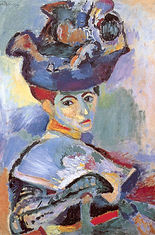
Paddock Arts
- Mr. Zielinski-
-Visual Arts and Drama-
I'stuart paddock art palatine school musicals", "art drama palatine school play"stuart paddock art palatine school musicals", "art drama palatine school play"stuart paddock art palatine school musicals", "art drama palatine school play"stuart paddock art palatine school musicals", "art drama palatine school play"stuart paddock art palatine school musicals", "art drama palatine school play"


Henri Matisse - Fauvism
Color and Proportion
In this project we studied the paintings of Henri Matisse. He was one of the fathers of the Fauvist style of painting. The term Fauvist came from the French word meaning "Wild Beast". It was what critiques of his artwork said his Fauvists were a short-lived and loose grouping of early 20th century Modern artists whose works emphasized painterly qualities and strong color over the representational or realistic values retained by Impressionism. While Fauvism as a style began around 1900 and continued beyond 1910, the movement as such lasted only three years, 1905–1907.
As a class we used visual thinking skills to look at how Matisse used colors and analyzed how his paintings showed the influence that Impressionist artists had on his work. We studied Portrait of Madame Matisse (The green line), 1905 to see how his portrait set the stage for the Fauvist movement. His use of bright and unusual colors while using shapes to divide up the colors on the canvas which was a move towards greater abstraction, the tendency to take greater liberties with visual appearances which helped Cubism to emerge a short time after. The children had a choice to either do a portrait of themselves or that of a Cartoon character. Once they sketched out their choice, they used pastels dipped in white paint to enhance their drawing. They were encouraged to use wild strange colors for their artwork. Behind their portrait they applied a color pattern that would help emphasize the color and form of their portrait.
Henri Matisse (December 31, 1869 – November 3, 1954)
He was a French artist, known for his use of color and his fluid and original draughtsmanship. He was a draughtsman, printmaker, and sculptor, but is known primarily as a painter. Matisse is regarded, along with Picasso and Marcel Duchamp, as one of the three seminal artists of the 20th century, responsible for significant developments in painting and sculpture. Although he was initially labeled a Fauve (wild beast), by the 1920s, he was increasingly hailed as an upholder of the classical tradition in French painting, His mastery of the expressive language of color and drawing, displayed in a body of work spanning over a half-century, won him recognition as a leading figure in modern art. To see more of his work click on the images below.
 |
|---|
 |
 |
 |


